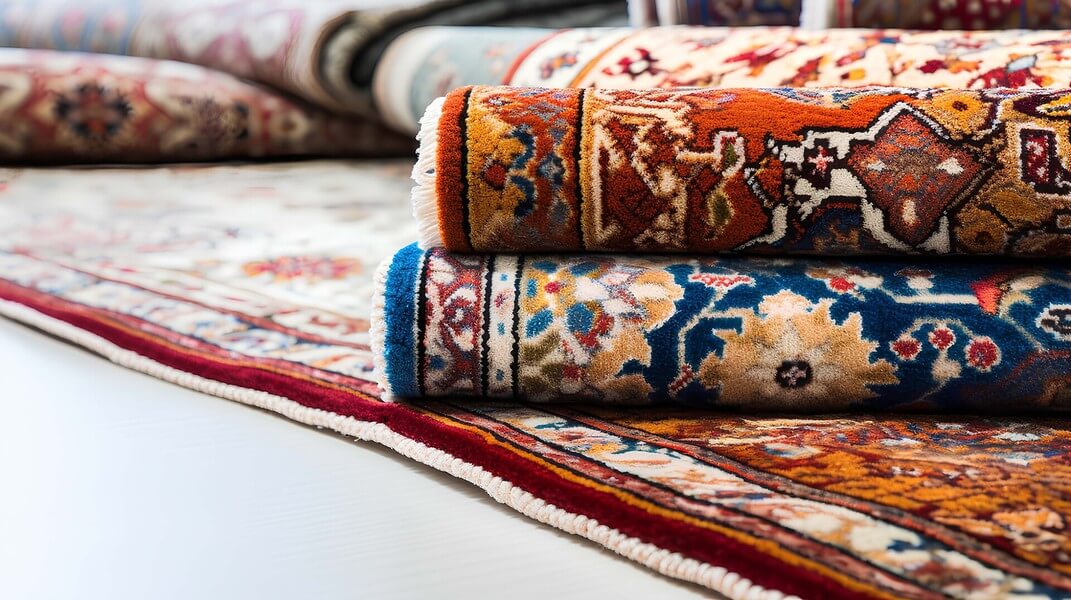Persian rugs are more than just beautiful floor coverings; they are pieces of art that require special care to preserve their intricate designs and vibrant colours. As a delicate yet durable investment, proper care can extend the lifespan of these rugs for generations. However, the unique materials and craftsmanship involved in Persian rugs demand specific cleaning and maintenance techniques. Mauritz Vermeulen, the founder of M&R Carpet Services and a local carpet expert in Pretoria, offers some invaluable insights into keeping Persian rugs in pristine condition.
To keep Persian rugs looking their best, regular maintenance is essential. Mauritz Vermeulen recommends vacuuming both sides of the rug weekly to prevent dust and dirt from embedding in the fibres. Persian rugs, especially wool-based ones, are prone to trapping dust and allergens. Vacuuming lightly without using the beater bar ensures the fibres remain intact while removing surface debris. It’s equally important to vacuum the rug’s underside, as this helps eliminate hidden dirt that can wear down the backing.
Persian rugs often experience uneven wear due to foot traffic, furniture pressure, and sunlight exposure. To prevent this, rotate your rug every six months. This ensures that the wear is evenly distributed and avoids discolouration or fibre degradation in high-traffic areas. Sunlight can also cause fading, so consider keeping your rug away from direct sunlight or using blinds to limit UV exposure.
Accidents happen, but how you handle them can determine the longevity of your Persian rug. According to Vermeulen, it’s crucial to address spills immediately by blotting the area with a clean, dry cloth. Avoid using harsh chemicals or scrubbing the rug, as this can damage the delicate fibres and fade the dyes. Instead, a simple solution of water and white vinegar can help neutralise stains without causing harm. For more severe stains, it’s advisable to consult a professional carpet cleaner who specialises in Persian rugs.
Professional Deep Cleaning
Even with the best at-home care, Persian rugs require periodic deep cleaning to maintain their integrity. Mauritz Vermeulen emphasises the importance of professional cleaning every 12 to 18 months, depending on foot traffic and environmental conditions. M&R Carpet Services uses gentle yet effective methods to clean Persian rugs without damaging their fibres or natural dyes. Traditional home cleaning methods are often too harsh for these rugs, leading to irreversible damage.
Using a rug pad beneath your Persian rug can protect both the rug and the floor underneath. A good-quality rug pad reduces friction between the rug and the floor, which helps prevent slipping and excess wear on the fibres. It also adds cushioning, extending the life of the rug and making it more comfortable underfoot.
Can Persian rugs be exposed to direct sunlight?
No, it’s best to avoid direct sunlight on Persian rugs. South Africa’s high sunlight exposure can fade the colours and make the fibres dry and brittle. If sunlight exposure is unavoidable, you can limit the damage by closing curtains or blinds when the room is not in use. Additionally, regularly rotating the rug helps spread the wear and sunlight exposure evenly.
2. How do I clean dust and dirt off a Persian rug?
To clean dust and dirt, lightly brush the rug with a soft bristle brush once a month to loosen debris like dust, pet hair, and pollen. After brushing, give it a gentle vacuum. You can also wipe the surface with a damp cloth or sponge to restore its colours and fibres, but avoid soaking the rug as too much moisture can be harmful.
3. How often should I rotate my Persian rug to prevent wear?
It’s recommended to rotate your Persian rug every one to two months. This helps prevent uneven wear, especially in high-traffic areas or if parts of the rug are under furniture. Rotating ensures that the rug wears evenly and that colours fade more uniformly over time.
4. How do I untangle the fringes on my Persian rug?
Avoid combing out tangled fringes, as this could damage the natural fibres. Instead, gently shake the tassels by lifting one side of the rug at a time. If that doesn’t work, you can fold the fringes under the rug to protect them. Secure the folded fringes with fabric or light tape to avoid damage.
5. What’s the best way to store a Persian rug?
For short-term storage, roll the rug loosely and tie it with soft string or rope to keep its shape. For long-term storage, store the rolled rug flat in a cool, dry place out of direct sunlight. Check it every few months to ensure it’s not damaged by moisture, pests, or other factors.
6. Can I hang a wet Persian rug to dry?
No, you should never hang a wet Persian rug. The weight of the water can stretch the fibres, causing permanent distortion. Persian rugs are delicate, and DIY washing or drying can cause damage. It’s best to leave cleaning and drying to professionals who are experienced with handling oriental rugs.
If you need to store your Persian rug for an extended period, it’s important to do so properly to avoid damage from moisture, moths, or mould. Vermeulen advises rolling the rug with acid-free paper and storing it in a cool, dry place. Make sure the rug is completely dry before storage to prevent mildew from forming. For added protection, consider wrapping the rug in a breathable fabric to protect it from dust and insects.
Caring for Persian rugs requires regular maintenance, careful cleaning, and professional expertise to preserve their beauty and extend their lifespan. With advice from Mauritz Vermeulen and the services of M&R Carpet Services, Persian rug owners in Pretoria can rest assured that their cherished pieces are in good hands. By following these steps, your Persian rug can continue to enhance your home for years to come, maintaining its artistry and value.




